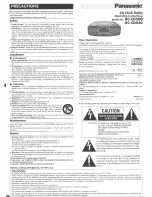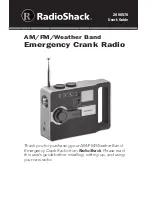
T X 3 5 0 0 S
I N S T R U C T I O N M A N UA L
PA G E 3
IMPORTANT INFORMATION
The use of the Citizen Band radio service is licensed in
Australia by the ACMA Radio communications (Citizens
Band Radio Stations) Class Licence and in New Zealand
by the Ministry of Economic Development New Zealand
(MED). A General User Radio Licence for Citizens Band radio
and operation is subject to conditions contained in those
licences.
The class licence for users and equipment operating in the
CB/PRS 477 MHz band has been amended. This radio meets
the new 80 channel standard.
In simple terms the same amount of spectrum is available;
however, radio transceivers can now operate in a narrower
bandwidth and hence use less spectrum. These radios are
generally referred to as narrowband or 12.5 kHz radios.
By using 12.5 kHz channel spacing instead of 25 kHz, the
40 channels originally allocated can now be expanded to
80 channels thereby doubling the channel capacity and
relieving congestion in the UHF CB/PRS band.
Original 40 channel wideband Radios will continue to operate
on the original 40 channels, however they will not be able
to converse on the newer channels 41 – 80. The newer
narrowband radios will be able to converse with all older 40
channel wideband radios on all channels 1 to 40 as well as
the newer channels allocated from 41 to 80. The mixing of
narrowband and wideband radios in the same spectrum can
cause some possible operating issues of interference and
varying levels of received volume.
POSSIBLE ISSUES
The mixing of narrowband and wideband radios in the
same spectrum can cause some possible operating issues
of interference and differences in levels of received volume.
When a new narrowband radio receives a transmission
from an older wideband radio the speech may sound loud
and distorted – simply adjust your radio volume for best
performance.
When an older wideband radio receives a signal from a new
narrowband radio, the speech may sound quiet – simply
adjust your radio volume for best performance.
Depending on how close your receiving radio is to another
transmitting radio, there can be interference from the
transmitting radio if it is using a channel adjacent to the
channel you are listening to. Simply try moving up or down a
few channels from the currently selected channel.
The above situations are not a fault of the radio but a normal
symptom of operating wideband and narrowband radios in
the same bandwidth. This possible interference will decrease
over time as the population of wideband radios operating in
the UHF CB band ages and decreases.
Further information and updates are available from the
Australian Communications and Media Authority (ACMA)
at www.acma.gov.au and the Ministry of Economic
Development (MED) Radio Spectrum Management at:
www.rsm.govt.nz
EMERGENCY CHANNELS
The ACMA has allocated channels 5/35 for emergency use
only. Channel 5 is the primary Simplex Emergency Channel.
Where a Channel 5 repeater is available, you should select
Duplex on CH 5.
NOTE:
Channel 35 is the input channel for the Channel 5
repeater therefore Channel 35 should also not be used for
anything other than emergency transmissions.
TELEMETRY CHANNELS
ACMA regulations have allocated channels 22 and 23
for telemetry only applications and have prohibited the
transmission of speech on these channels. Consequently
the TX3500S has a transmit inhibit applied to channels 22
and 23. In the event additional telemetry/telecommand
channels are approved by the ACMA, these channels shall be
added to those currently listed where voice transmission is
inhibited. Currently transmissions on channels 61, 62 and 63
are also inhibited and these channels are reserved for future
allocation.




































